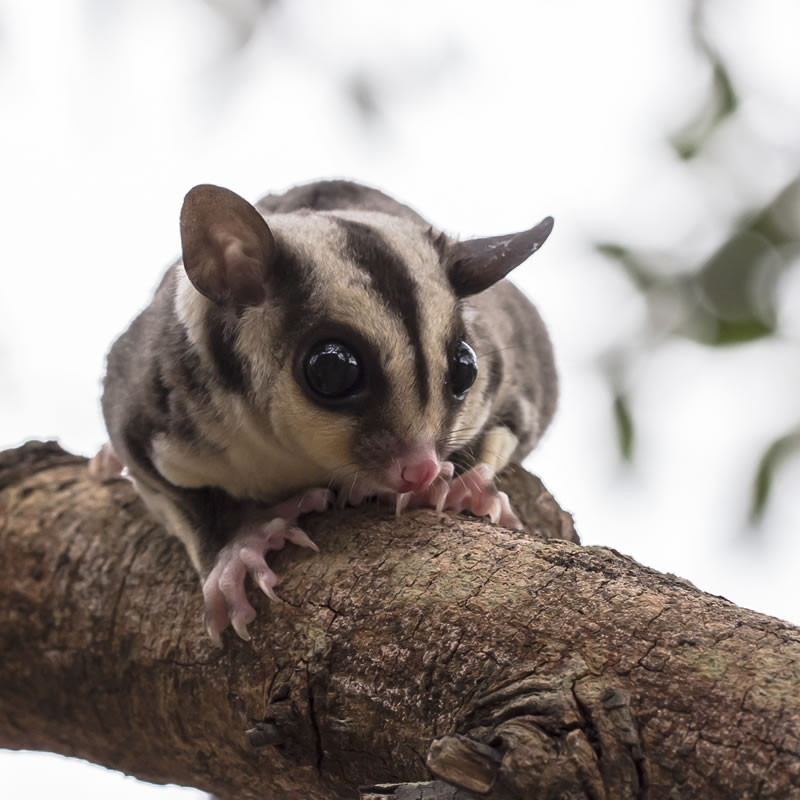
Scientific Name
Phascolarctos cinereus
Classification
| Kingdom | Animalia |
| Phylum | Chordata |
| Class | Mammalia |
| Order | Diprotodontia |
| Family | Phascolarctidae |
| Genus | Phascolarctos |
| Species | cinereus |
IUCN Redlist Status

Location
Sugar gliders are located in parts of Australia, New Guinea, Tasmania and nearby islands.
Habitat
They live in forests where Eucalyptus trees are present.
Diet
They feed on the sap of eucalyptus trees. This is where the "sugar" in Sugar Glider is derived from. They will also eat fruits and vegetables, and insects also represent a large portion of their diet.
Size
Sugar gliders weigh between 3 - 5 ounces and are approximately 14 - 15 inches in length including the tail.
Description
There is a long black stripe that extends from the nose to the back and the tip of the tail is also black.
Reproduction
A female will typically have 1 - 2 young and will carry the young in her pouch for approximately 10 weeks. A glider will reach sexual maturity in about a year.
Adaptations
They have membranes called patagium which extend from their foot area to their hand area on each side. With these patagium, a sugar glider can glide distances of 50 yards or more, or over half the distance of a football field.
Special Facts
Sugar gliders are popular as pets in the United States and other areas of the world.
